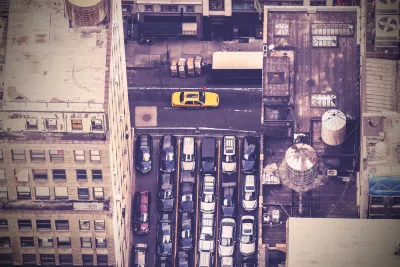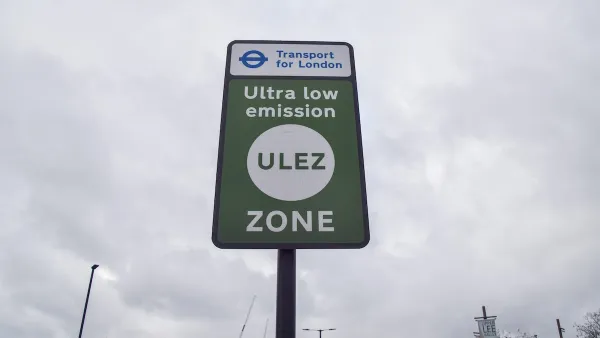Congestion pricing, done right (details matter), mitigates a downside of urban density: traffic congestion. Professor John Rennie Short explores the history of congestion pricing, its application in Singapore and London, and why it's good for NYC.

"For scholars like me who focus on urban issues, serious discussion of congestion pricing in New York City is welcome news," writes John Rennie Short of the School of Public Policy, University of Maryland for The Conversation on Feb. 7.
Properly used, congestion pricing can ease traffic, speed up travel times, reduce pollution and provide funds for public transport and infrastructure investments. The details matter, including the size and timing of charges and the area that they cover.
Short acknowledges the challenges, such as equity, which has New York City Mayor Bill de Blasio opposed to tolling the Harlem and East River briges which could have been a central part of the plan proposed by the Fix NYC panel on Jan. 19.
But the key point is that this approach has succeeded in cities including London, Singapore, and Stockholm.
Short discusses the history of congestion pricing, beginning with economists Arthur Pigou in 1920 and 1996 Nobel Prize winner William Vickery, and urban congestion charging in practice, beginning with the world's first (1975) and most advanced system in Singapore, which introduced variable pricing in 1998, and London's $15.90 charge which began 2003. By contrast, the Fix NYC plan would charge passenger vehicles a daily fee of $11.52 to drive below 60th Street in Manhattan.
Density is good, "(b)ut growing concentration also imposes costs, and one of the largest is traffic congestion," adds Short.
Costs multiply when we factor in use of motor vehicles on public roads. Drivers spend valuable time sitting idly in traffic jams, while noise, accidents and pollution impose heavy burdens on city residents.
Other than the time wasted by motorists themselves while stuck in traffic, those other costs are largely (negative) externalities, as Pigou would say, borne by society, which prompts Short to ask, "Should road use be free?"
Should the answer be any different than to the question, "Should parking be free?".
New York City should move forward with congestion pricing
"Unlike other taxes that can be easily dismissed as imposing costs and killing jobs, congestion pricing improves market efficiencies because it forces people to think about their travel and leads to a more rational use of our public roads," concludes Short. "In my view, it is a powerful policy whose time has definitely come."
Correspondent's note: Read more by Professor Short in Planetizen: "The Historical Foundation of America's Transit Disinvestment," April 7, 2016.
Hat tip to AASHTO Daily Transportation Update.
FULL STORY: Are traffic-clogged US cities ready for congestion pricing?

Analysis: Cybertruck Fatality Rate Far Exceeds That of Ford Pinto
The Tesla Cybertruck was recalled seven times last year.

National Parks Layoffs Will Cause Communities to Lose Billions
Thousands of essential park workers were laid off this week, just before the busy spring break season.

Retro-silient?: America’s First “Eco-burb,” The Woodlands Turns 50
A master-planned community north of Houston offers lessons on green infrastructure and resilient design, but falls short of its founder’s lofty affordability and walkability goals.

Test News Post 1
This is a summary

Analysis: Cybertruck Fatality Rate Far Exceeds That of Ford Pinto
The Tesla Cybertruck was recalled seven times last year.

Test News Headline 46
Test for the image on the front page.
Urban Design for Planners 1: Software Tools
This six-course series explores essential urban design concepts using open source software and equips planners with the tools they need to participate fully in the urban design process.
Planning for Universal Design
Learn the tools for implementing Universal Design in planning regulations.
EMC Planning Group, Inc.
Planetizen
Planetizen
Mpact (formerly Rail~Volution)
Great Falls Development Authority, Inc.
HUDs Office of Policy Development and Research
NYU Wagner Graduate School of Public Service



























